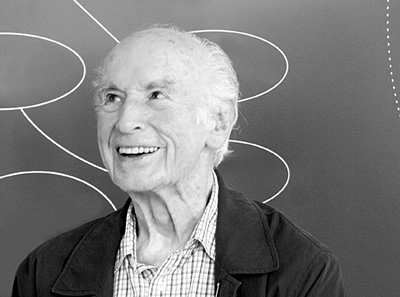 Albert Hofmann was born in Baden, Switzerland, on the elventh of January, 1906, and studied chemistry at the University of Zürich. His main interest was the chemistry of plants and animals, and he later conducted important research regarding the chemical structure of the common animal substance chitin, for which he received his doctorate.
Albert Hofmann was born in Baden, Switzerland, on the elventh of January, 1906, and studied chemistry at the University of Zürich. His main interest was the chemistry of plants and animals, and he later conducted important research regarding the chemical structure of the common animal substance chitin, for which he received his doctorate.Hofmann joined the pharmaceutical-chemical department of Sandoz Laboratories (now Novartis), located in Basel. He began studying the medicinal plant squill and the fungus ergot as part of a program to purify and synthesize active constituents for use as pharmaceuticals. Over the next few years, he worked his way through the lysergic acid derivatives, eventually synthesizing LSD-25 for the first time in 1938. After minimal testing, LSD-25 was set aside as he continued with other derivatives. Four years later, on April 16, 1943, he re-synthesized LSD-25 because he felt he might have missed something the first time around. That day, he became the first human to experience the effects of LSD after accidentally ingesting a minute amount.
Three days later, on April 19, 1943, he decided to verify his results by intentionally ingesting 250 ug of LSD. This day has become known as "Bicycle Day" as Hofmann experienced an incredible bicycle ride on his way home from the lab.
"Everything I saw was distorted as in a warped mirror," he said, describing his bicycle ride home. "I had the impression I was rooted to the spot. But my assistant told me we were actually going very fast."
Upon reaching home, Hofmann sat down on a divan and began experiencing what he called "wonderful visions."
"What I was thinking appeared in colors and in pictures," he told Swiss television network SF DRS for a program marking his 100th birthday two years ago.
For a time, Sandoz sold LSD 25 under the name Delysid, encouraging doctors to try it themselves. It was one of the strongest drugs in medicine — with just one gram enough to drug an estimated 10,000 to 20,000 people for 12 hours.
Hofmann discovered the drug had a similar chemical structure to psychedelic mushrooms and herbs used in religious ceremonies by Mexican Indians.
In addition to his discovery of LSD, he was also the first to synthesize psilocybin (the active constituent of 'magic mushrooms') in 1958. Albert Hofmann, known as the 'father of LSD', continued to work at Sandoz until 1971 when he retired as Director of Research for the Department of Natural Products. In his retirement, Hofmann served as a member of the Nobel Prize Committee. He continued to write, lecture, and play a leading role as an elder in the psychedelic community until his quick and relatively painless death from a heart attack at the age of 102.
"I think that in human evolution it has never been as necessary to have this substance LSD. It is just a tool to turn us into what we are supposed to be. ” — Albert Hofmann








No comments:
Post a Comment